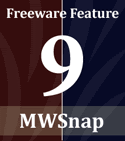Flashlights are one of the hobbies of nearly all men, just like guns, trucks, and tools. Our fascination with these items is difficult to explain, as is my desire to test my flashlights to see how each of them performs.
Note that this test does not take into account the high-end flashlights used by hunters, police officers, etc. So if you're the kind of person who wants or needs the $60-400 flashlights made by SureFire or similar brands, this post may not be for you. This is simply a brief evaluation of the kinds of everyday flashlights you can purchase at your local store.
Test details:
 All flashlights had new Rayovac batteries, except for the Bushnell 1-watt Luxeon LED, which takes a lithium ion battery. That flashlight's battery was barely used prior to this test.
All flashlights had new Rayovac batteries, except for the Bushnell 1-watt Luxeon LED, which takes a lithium ion battery. That flashlight's battery was barely used prior to this test.- A Canon SD400 was mounted to a tripod and used to take pictures of the same location under different lighting conditions. The picture on the right was taken during the day under a mixture of natural and artificial light. Compare it with the results table below.
- The descriptions of the flashlights are as follows:
- 1: Traditional flashlight with traditional bulb. Takes 4 AA batteries. Bulb was old. Approximate value: $10.
- 2: Mini Maglight with traditional (pre-LED) bulb. Takes 2 AA batteries. Bulb was old. During test, beam was focused as narrowly as possible. Approximate value: $10.
- 3: LED flashlight with 1-watt Luxeon LED. Takes 3 AAA batteries. Approximate value: $25.
- 4: Bushnell LED flashlight with 1-watt Luxeon LED. Takes CR123A, 3-volt battery. Approximate value: $40.
- 5: Low-end 9-LED flashlight. Takes 3 AAA batteries. Approximate value: $7.
Images:
Click on a thumbnail to see a larger version of the image.
Observations:
- The traditional flashlight is best for long-distance use. It has a dominant hotspot as well as a decent amount of surrounding light. The color of the light is very warm, as with most incandescents.
- The Mini Maglight was disappointing. I don't see much use for it.
- The Luxeon 1-watt LEDs performed well. They have a much whiter light than the incandescents, and they do not suffer from the same degree of blue tint that the low-end LED light does. This type of flashlight is an excellent compromise, and would be great for a variety of applications.
- Overall, the Bushnell lithium-powered flashlight was my favorite in this test, producing an adequately strong hotspot with plenty of surrounding light. Its performance is impressive given its size. However, if I had to take just one flashlight with me when going on a trip, a walk in the woods, etc, it would be the other Luxeon LED flashlight. The reason? 3 AAA batteries are cheaper and easier to find than a lithium battery.
- The small 9-LED flashlight produced no discernible hotspot, and had an unmistakable bluish tint. It would be ideal for reading (book, map, etc.), given its small size, lack of a hotspot, and low power consumption.















 A few posts ago
A few posts ago


 Occasionally, a store brand item surpasses "good enough" and actually performs remarkably well. Sam's Choice plastic wrap (not Great Value plastic wrap) is one of those products for me. I realize a wiki would be a more appropriate venue for this question (as would a web site with more than a dozen readers), but I'm in search of other items that happen to be both inexpensive and of excellent quality. So what have you found?
Occasionally, a store brand item surpasses "good enough" and actually performs remarkably well. Sam's Choice plastic wrap (not Great Value plastic wrap) is one of those products for me. I realize a wiki would be a more appropriate venue for this question (as would a web site with more than a dozen readers), but I'm in search of other items that happen to be both inexpensive and of excellent quality. So what have you found?


